History (1996): New HDD Plant for IBM in Hungary
Will goulash take in Szekesfehervar?
By Jean Jacques Maleval | May 20, 2021 at 2:31 pmIBM Corp. opens a new HDD drive assembly plant in Hungary. What are Big Blue’s odds for success in Europe, where the majority of factories have closed?
IBM Storage Products Kft., a wholly-owned IBM subsidiary, is a new HDD drive plant in Szekesfehervar, 45 miles south west of Budapest (Hungary).
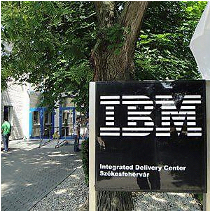
The 110,000 square feet facility (a third of which is cleanroom) is expected to produce over million drives in 1996 for the European market.
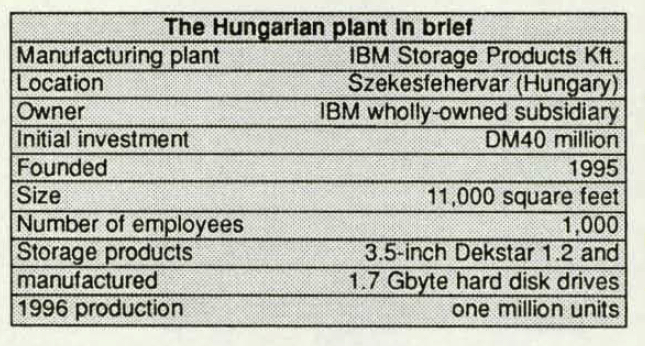
At the moment, the plant is operating at a third of capacity for production destined for IBM only.
European distributors and OEMs will supplied gradually, as the facility hits stride. Two production teams rotate 5 days a week, but will eventually evolve into 3 teams working or 6 days weekly. The current goal is to expand from the 350 employees now engaged to a total of 1 000. As far as chief components are concerned, the platters and MR heads come from Mainz (Germany) , the PCBs from the Philippines and IBM Italy, while the motors come solely from the Philippines. At the present date, the facility produces only 3.5-inch Dekstar 1.2 and 1.7GB drives in AT interface.
The installation and management of the factory will be entirely from IBM’s facility in Mainz.
But why choose this particularly country in Eastern Europe? “Our investment in Hungary was based on the high levels of education, a stable business framework and good communications combined with competitive cost structures,” said Waler Meizer, IBM Storage Systems director for EMEA.
Big Blue has yet to commit a substantial investment. Meizer officially mentioned DM40 million but the calculation of this figure deserves further analysis, since it includes technology transfers from Mainz to Szekesfehervar. Property and constructions costs have not yet been factored in. The were fronted by the Hungarian conglomerate Videoton. IBM only needed to guarantee the loan necessary for the transaction.
Even the employees are not on IBM’s payroll, but instead were recruited by Videoton-Mechatronika, a wholly-owned subsidiary of Videoton, which invested DM 15 mil lion in the deal, and which will be paid by IBM for its services at present.
A large portion of the cleanrooms as well as equipment required for drive assembly comes from IBM’s Mainz factory, which ceased HDD production in order to focus on manufacturing of magnetic platters and heads.
Considering also the special fiscal treatments enjoyed by the new plant, it is no wonder that Szekesfehervar was selected. One important point remains to be discussed in the realm of HDD production that is, for the most part, under-automated: the cost of labor, which IBM ultimately pays through the intermediary of Videoton. According to Meizer, the rather young) Hungarian workers are compensated at between $400 and $600 monthly (the average monthly salary in Hungary is closer to $300).
For the past 3 or 4 years, several major HDD manufacturers considered putting plants in Europe. Most ultimately resisted, choosing instead sites in Southeast Asia.
IBM, for its part, even sold its facility in Havant (UK), and set up a huge assembly line in Singapore.
The Szekesfehervar deal, however, was apparently ably negotiated by IBM’s German operatives, and able to take advantage of a lower labor cost (for Europe) as well as a reasonably local source of certain components.
The new outfit is undoubtedly an important test to show that Europe, or at least Eastern Europe, eager to welcome foreign investment and thus prepared to offer favorable financial incentives, can compete with Southeast Asia on this front.
It is not the quality of Hungarian labor so much as its cost that may pose productivity problems in the near future, since salary levels in countries such as Malaysia, Thailand or the Philippines, and soon even China, are considerably lower.
What remains to be seen is whether this particular liability can be offset by the advantages in the facility’s proximity to European customers.
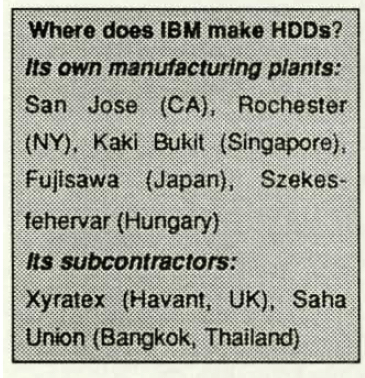
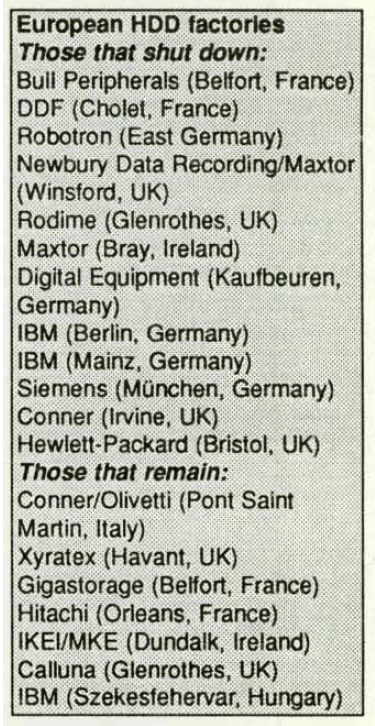
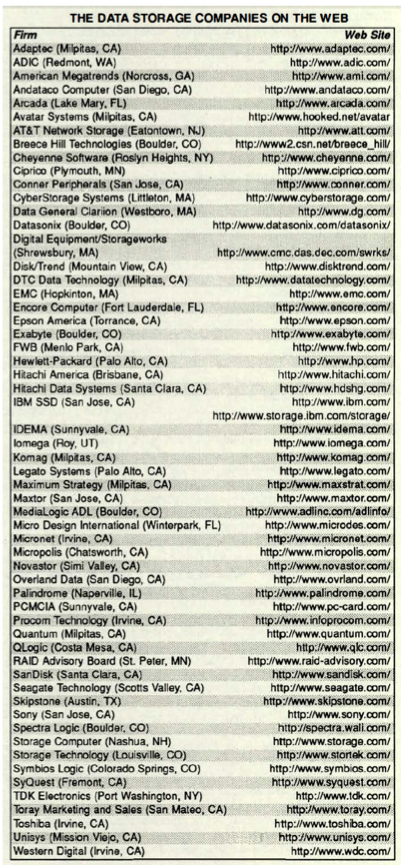
This article is an abstract of news published on the former paper version of Computer Data Storage Newsletter on issue 96, published on January 1996.













 Subscribe to our free daily newsletter
Subscribe to our free daily newsletter

